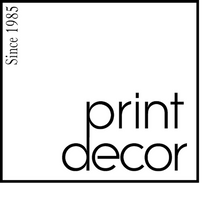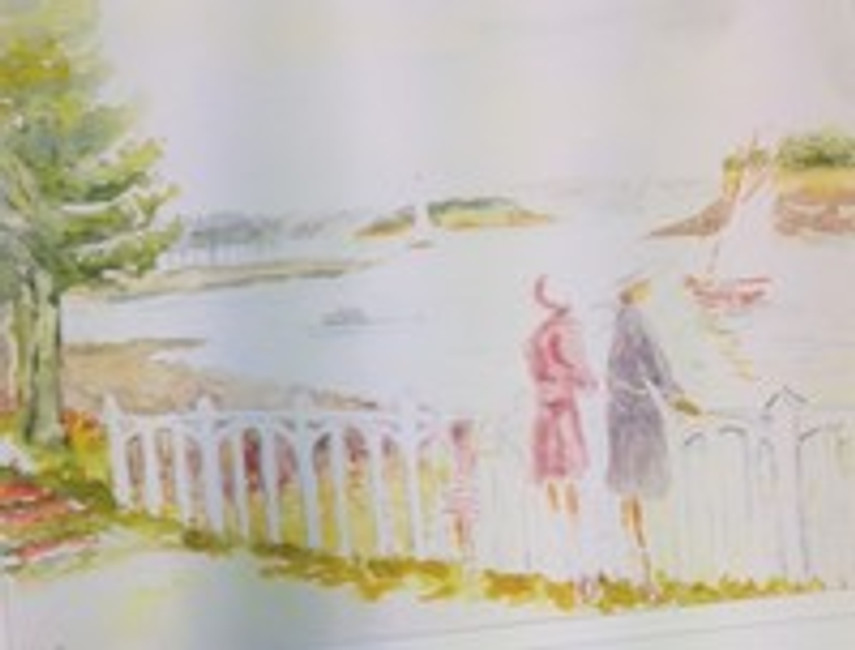
Art and Print Preservation and Restoration
The single most destructive factor to your artwork and prints
Compare these two copies of the same image


Hint: It's in this picture:

Nick Psomiadis: The 12 Apostles Sunrise
If you guessed sunlight, you guessed right.
All light causes irreversible damage to works on paper. Natural light and fluorescent light sources are rich in ultra-violet radiation, the most active and damaging part of the spectrum. Sustained exposure to light can cause paper to become brown and brittle; pigments and inks can fade rapidly. The combined effect of darkened paper and dulled image can alter the appearance of a work beyond recognition.
The best solution we can offer is a selection of UV blocking glass and perspex. Where normal glass filters approximately 30% of the damaging UV light we can provide relatively inexpensive UV blocking glass or perspex rated at approx 60% UV filtration and on up to over 90% filtration for a more expensive option.

Image courtesy of Art Reproductions Co.
Other damaging factors include acidity level in the framing products, mould and dirt. Fortunately we have one of the most respected art conservators in Melbourne restoring customers' art works and we have access to the highest quality conservation materials...Read on
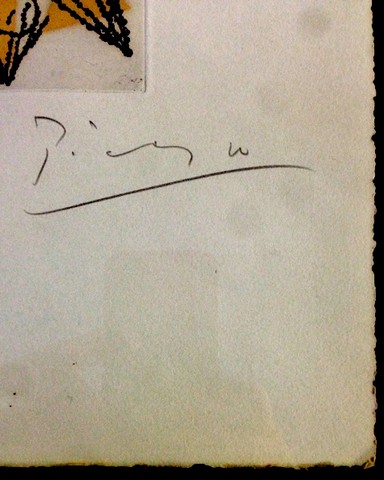
Hand signed artwork by Pablo Picasso
It is clear to see the damage to this work. The rectangular shadow marks are signs of glues used to adhere the paper to the backing. The circular marks have appeared because the paper was pressed directly to the picture framing glass and as temperature changes occurred pools of moisture formed and this caused mould to develop in the paper.
Conservation framing would include acid free backing and conservation mat boards and acid free hinging tapes. The glass would be raised at least 2 to 5 mm above the artwork creating an air pocket which would prevent the water condensation and resultant mould.
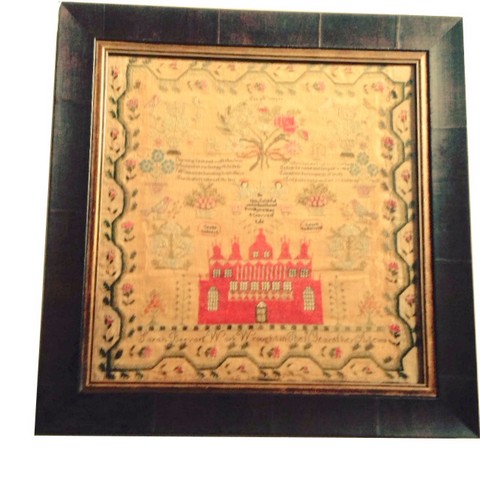
Above and detail below: A 19th century cross stitch. As it was a fire screen it had extensive smoke and mould damage not to mention fire damage. Our restorer pain- stakingly removed all the aggressive elements and then conservation framing in this beautiful olive wood frame has given it a new life.
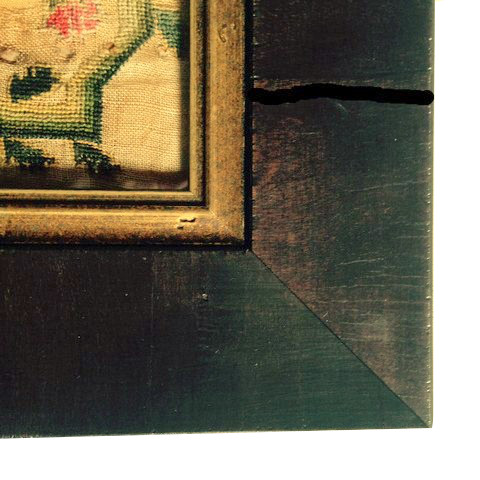
Preservation and care of valuable and cherished art can be overlooked resulting in permanent damage. As picture framers we sometimes discover a valuable piece of art work that is being destroyed by the framing materials.
When it comes to framing those all important wedding photos care should be given to long term preservation.
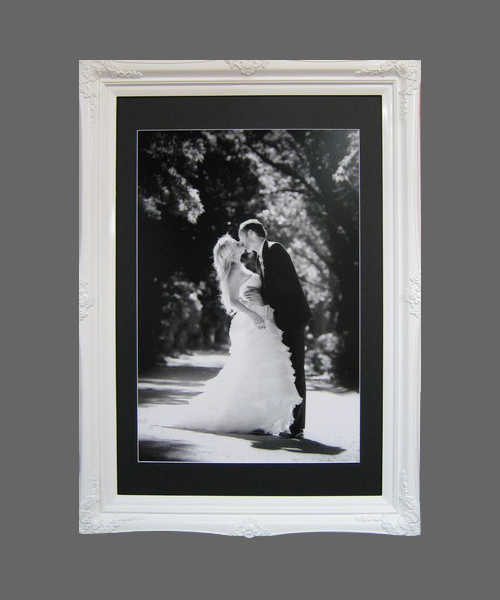
Such factors as the backing board and mat board (cardboard) surrounds should be of the highest quality acid free archival materials. If the picture will be subjected to strong light the UV rays can cause damage if the correct glass or Plexiglass (perspex) is not used. Photos can be carefully glued down to prevent ripple but a special inert glue should be used.
The original Batman sketch was drawn on low quality paper. To help preserve this work we placed a sheet of special hidden archival board beneath the aged paper sketch. Due to the acid free nature of the archival board and other in built properties the damaging materials in the old paper are gradually reduced and absorbed by the board thus dramatically extending the life of the sketch.

We used yellow and purple mat board borders for aesthetic reasons but again ensured these mats were museum quality. The framing glass was raised 2 mm above the art work to create a mini air pocket which helps prevent mould forming due to changing temperatures and condensation moisture droplets lodging on the paper surface. As a final precaution the backing board was also acid free. Had the customer intended to hang the picture in a space exposed to sun light we would have used UV blocking glass or Perspex/Plexiglas.
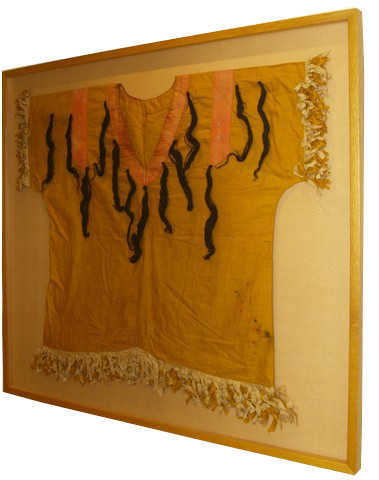
The above garment had been a cherished keepsake handed down. It was being destroyed due to environmental exposure. In framing this shirt care was taken to use museum standard framing materials, including backing and fibres used to sew the garment on to the backing being such that deterioration of the irreplaceable work was eliminated to the highest possible degree.
The fabric was subjected to a benign gas to kill living organisms to help prolong the life of the garment originally worn by a Canadian Indian chief many years ago.

When this oil painting arrived for re framing the surface was badly discoloured and in a pretty sad state. We used a special art cleaning solution and art varnish to bring it back to its original vibrancy. The elegant modern gilt frame replaced the boring old wood frame producing a new slick feel. I wish we took a snap of the "before" to compare.
Care Factor
When a customer brings in a valuable or cherished work of art or keepsake our first concern is the preservation and long term protection of the work. We are fortunate to have one of Melbourne's most experienced art conservators available to appraise your works and provide an obligation free quote to restore your work.
A vital factor in framing conservation are the professional standards set by the framers in their attitude and pride in undertaking the task. We are happy to work with responsible, caring picture framers using the latest precision equipment.
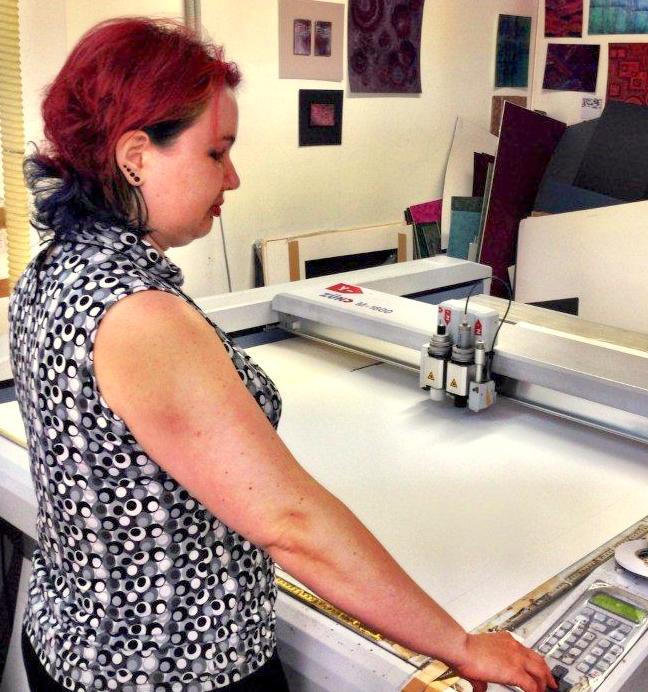
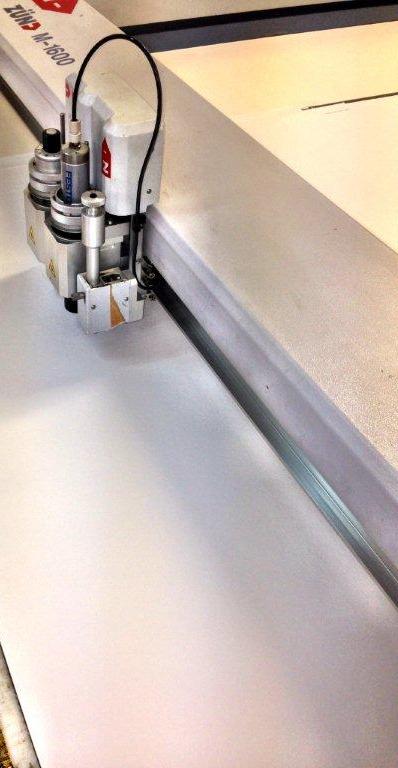
A vital factor in framing conservation are the professional standards set by the framers in their attitude and pride in undertaking the task. We are happy to work with responsible, caring picture framers using the latest precision equipment.
If you have art works that you think may need some "TLC" please feel free to bring it in or e mail some photos for an obligation free appraisal.
We look forward to helping you and your art works, Lynne & Bernie Lowenstein.
You can read about all our framing services by clicking here.
